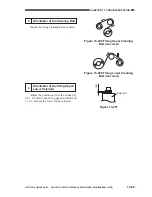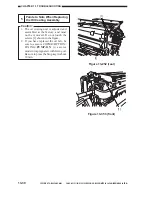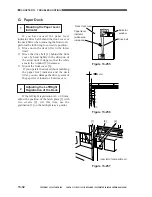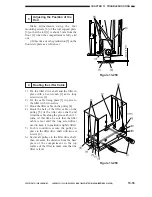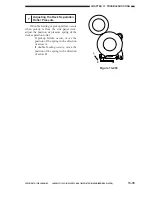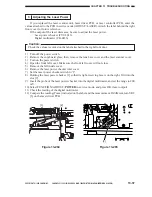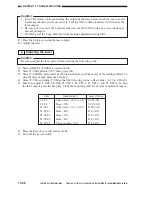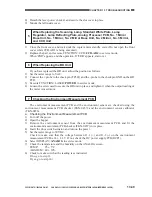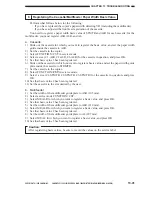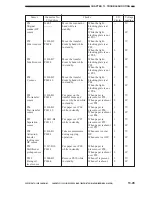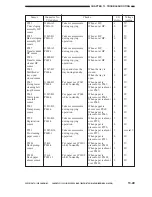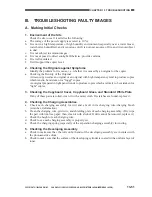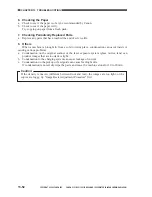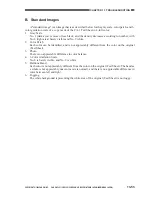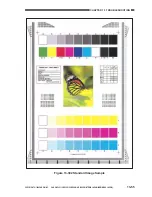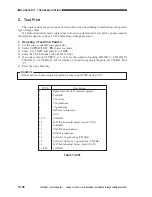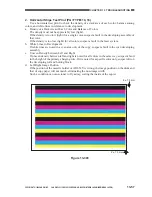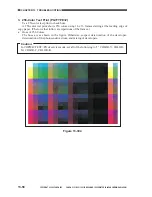
COPYRIGHT © 1999 CANON INC. CANON CLC1120/1130/1150 REV.0 MAR. 1999 PRINTED IN JAPAN (IMPRIME AU JAPON)
13-43
CHAPTER 13 TROUBLESHOOTING
Method 2
1) Turn off the power switch.
2) Remove the photosensitive drum unit.
3) Fit the potential sensor electrode (TKN-0197) to the potential sensor.
Caution:
When fitting the potential sensor electrode to the potential sensor, make sure that magenta of
the electrode will not come into contact with the potential sensor base.
4) Attach the clip of the jumper line to the potential sensor electrode.
Caution:
Be sure NOT to let the clip come into contact with the sensor cover. Further, be sure to allow
enough distance from the sensor window.
5) Connect one end of the jumper wire to the copier's chassis metal plate (GND) of the copier.
6) Insert the door switch actuator into the door switch assembly.
7) Turn on the power switch.
After turning on the power switch, do NOT touch the potential sensor assembly.
8) Check to make sure that DISPLAY>DPOT>DPOT is 0 ± 30 V in service mode.
Reference:
If the reading is as indicated in method 1 but not as indicated in method 2, suspect dirt on the
sensor or a fault in the potential measurement unit.
If the reading is not as indicated in method 1 and method 2, you may assume that the signal
path from the potential sensor unit to the CPU on the CPU PCB is normal.
9) Turn off the power switch.
10) Detach the potential sensor electrode.
11) Mount the photosensitive drum unit.
12) Turn on the power switch.
Summary of Contents for CLC 1120
Page 6: ......
Page 20: ......
Page 22: ......
Page 48: ......
Page 94: ......
Page 96: ......
Page 114: ......
Page 134: ......
Page 136: ......
Page 152: ......
Page 242: ......
Page 346: ......
Page 374: ......
Page 376: ......
Page 412: ......
Page 452: ......
Page 454: ......
Page 517: ......
Page 881: ......
Page 893: ......
Page 895: ......
Page 899: ......

